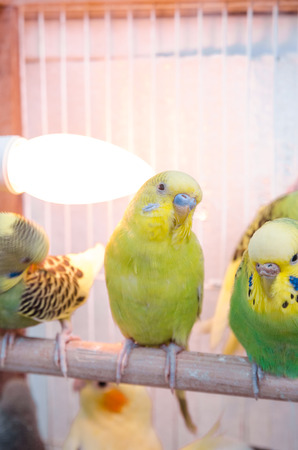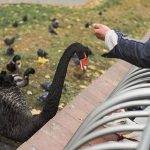Introduction to Ringneck Parrot Care
Ringneck parrots, also known as Indian Ringneck Parakeets, are cherished companions in many American homes thanks to their vibrant colors, intelligence, and playful personalities. These birds are highly social and curious, making them delightful pets for bird enthusiasts who are ready to invest in their care. However, ringneck parrots have unique personality traits—they are known for being independent, sometimes a bit stubborn, and incredibly quick learners. Proper care is crucial not only for their physical health but also for their emotional well-being. Without consistent attention to training, socialization, and health maintenance, ringnecks can develop behavioral issues or become stressed. Understanding their natural behaviors and needs will help ensure your parrot thrives in your home environment, strengthening the bond between you and your feathered friend.
2. Fundamentals of Training
Training your ringneck parrot is a rewarding experience that lays the foundation for a happy and well-adjusted companion. These intelligent birds thrive on mental stimulation, clear communication, and consistency. Understanding the fundamentals of training will help you build a strong bond and ensure your parrot’s long-term wellbeing.
Positive Reinforcement: The Key to Success
Ringneck parrots respond best to positive reinforcement—a training technique that rewards desired behaviors with treats, praise, or affection. Unlike punishment-based methods, positive reinforcement encourages trust and reduces stress, making your bird more receptive to learning.
Popular Rewards for Ringnecks
| Type of Reward | Examples | How to Use |
|---|---|---|
| Treats | Small pieces of fruit, seeds, millet spray | Offer immediately after desired behavior |
| Praise | “Good bird!”, gentle talking | Use an upbeat tone for encouragement |
| Affection | Head scratches, gentle petting | Reward calm and friendly actions |
Building Trust Through Consistency
Your ringneck parrot needs to feel safe during training sessions. Keep a consistent schedule and use the same cues for commands. Short, frequent sessions—about 10-15 minutes—work best. Always end on a positive note, even if progress is slow.
Basic Training Techniques for Beginners
- Step-Up Command: Teach your bird to step onto your finger or a perch using a treat as motivation.
- Recall Training: Call your parrot by name and reward it when it comes to you, strengthening your connection.
- No-Bite Rule: Gently withdraw attention if your parrot nips, reinforcing that biting is not acceptable.
Cultural Tips for American Parrot Owners
In the United States, many parrot owners find success by integrating training into daily routines such as morning greetings or evening “family time.” Using household sounds (doorbell, phone ring) as part of socialization can also help acclimate your bird to common American home environments.
With patience and the right approach, your ringneck parrot will become a confident and well-mannered member of your family.

3. Socialization Strategies
Socializing your ringneck parrot is a key part of ensuring a happy, well-adjusted companion who feels comfortable in your home. Ringnecks are intelligent and social birds, but they can also be a bit shy or reserved, especially around new people or unfamiliar situations. By taking intentional steps to socialize your parrot, you’ll foster trust, encourage affection, and help them feel at ease with all members of your family—including guests.
Start Early and Go Slow
If possible, begin the socialization process when your ringneck is young. Gently introduce them to new sights, sounds, and people in a calm environment. Take it slow—never force interactions. Allow your bird to observe from a safe distance and approach on their own terms.
Positive Reinforcement Matters
Always use positive reinforcement, such as favorite treats or enthusiastic praise, when your parrot shows curiosity or calmness around others. This helps build positive associations with new experiences and reduces anxiety.
Include the Whole Family
Encourage all household members to participate in daily care routines like feeding or gentle playtime. This helps your ringneck form bonds with everyone and not just one “favorite” person. Remind family members to speak softly and move slowly to avoid startling the bird.
Gradual Introduction to Guests
When introducing your parrot to guests, start with short visits and keep the environment calm. Ask visitors to let the parrot come to them rather than reaching out first. Over time, increase exposure as your bird’s confidence grows.
Respect Their Boundaries
Every ringneck has its own comfort level with social interaction. Watch for signs of stress—such as fluffed feathers or retreating—and give them space when needed. With patience and consistency, most ringnecks become affectionate companions who enjoy being part of family life.
4. Diet and Nutrition
Proper nutrition is fundamental to the health, happiness, and longevity of ringneck parrots. In the United States, avian veterinarians and bird care specialists recommend a diet that mimics what these birds would eat in the wild, while also ensuring access to high-quality, safe food products. A balanced diet for a ringneck parrot should include a variety of fresh vegetables, fruits, high-quality pellets, and occasional seeds or nuts as treats. Avoid feeding foods high in fat, salt, or sugar, as these can contribute to health problems such as obesity or liver disease.
| Food Type | Recommended Portion | Frequency |
|---|---|---|
| Pellets (formulated for parrots) | 50-60% of diet | Daily |
| Fresh Vegetables (e.g., leafy greens, carrots, bell peppers) | 20-25% of diet | Daily |
| Fresh Fruits (e.g., apple slices, berries, melon) | 10-15% of diet | A few times per week |
| Seeds and Nuts (unsalted) | Treats only | 1-2 times per week |
| Cooked Grains (quinoa, brown rice) | Small amounts | Occasionally |
Safe Foods and Foods to Avoid
It’s important to be aware of foods that are toxic to parrots. In American households, common foods like avocado, chocolate, caffeine, alcohol, onion, and garlic must be strictly avoided. Always wash produce thoroughly to remove pesticides and chemicals before serving.
Supplements and Hydration
If your parrot’s primary diet consists mostly of pellets formulated according to U.S. avian standards, additional vitamin or mineral supplements are usually unnecessary unless recommended by your avian vet. Clean, fresh water should be available at all times and changed daily to prevent bacterial growth.
Cultural Considerations for U.S. Bird Owners
In the U.S., it’s common to find high-quality pellet brands formulated specifically for parrots in pet stores or online. When purchasing food items, look for those labeled “for parrots” and ensure they meet AAFCO (Association of American Feed Control Officials) guidelines whenever possible. Remember that a varied diet not only meets nutritional needs but also helps with enrichment and socialization during mealtimes.
5. Daily Health Maintenance
Maintaining the health of your Ringneck Parrot involves a consistent daily and weekly routine that helps prevent illness and keeps your feathered friend feeling their best. Here’s what you need to know about creating an effective health maintenance schedule at home.
Grooming Essentials
Regular grooming is key to your parrots well-being. Most Ringnecks will preen themselves, but you can help by providing opportunities for safe bathing—either with a shallow dish of water or a gentle mist from a spray bottle. Check nails and beak regularly for overgrowth; if you notice issues, consult an avian veterinarian rather than attempting trimming yourself.
Cage Cleanliness
A clean environment reduces the risk of infections and parasites. Spot-clean your parrot’s cage daily by removing uneaten food, droppings, and soiled bedding. Once a week, do a thorough cleaning: wash perches, toys, food and water dishes, and replace all cage liners. Use bird-safe cleaning products or mild soap followed by a thorough rinse.
Monitoring Behavior for Early Signs of Illness
Pay close attention to your Ringneck’s behavior every day. Early signs of health problems can include changes in appetite, unusual vocalizations, fluffed-up feathers, lethargy, or changes in droppings. If you notice anything out of the ordinary, contact an avian vet promptly—early intervention makes a big difference.
Establishing a Routine
Consistency is reassuring for parrots and helps you spot problems early. Set regular times for feeding, cleaning, socializing, and observation. By incorporating these habits into your daily life, you’re building a foundation for your Ringneck Parrot’s long-term health and happiness.
6. Finding an Avian Veterinarian
When it comes to maintaining your ringneck parrot’s health in the United States, finding a qualified avian veterinarian is essential. Not all veterinarians are experienced with birds, so it’s important to seek out a specialist who understands the unique medical needs of parrots.
How to Locate an Avian Vet Near You
Start by searching the Association of Avian Veterinarians (AAV) online directory, which lists certified avian vets across the U.S. You can also ask for recommendations from local bird clubs, rescue organizations, or reputable pet stores. When calling a clinic, be sure to confirm that the veterinarian has experience treating ringneck parrots and is familiar with their specific needs.
Tips for Routine Checkups
Annual wellness exams are crucial for early detection of potential health issues in your ringneck parrot. During these checkups, your vet will perform a physical examination, check weight, review diet and environment, and may recommend bloodwork or fecal tests. Bring a list of any behavioral changes or symptoms you’ve noticed at home—these details can help your vet provide more comprehensive care.
Preventive Health Care Advice for U.S. Parrot Owners
Prevention is key to keeping your ringneck healthy. In the U.S., it’s especially important to discuss vaccinations (like for polyomavirus if recommended), safe household products (avoid Teflon/non-stick cookware fumes), and region-specific risks such as West Nile virus or local plant toxins. Your vet can also advise on appropriate grooming, nail trims, and wing clipping if needed. By establishing a relationship with a trusted avian veterinarian and staying proactive with preventive care, you’ll help ensure a long and healthy life for your feathered friend.
7. Enrichment and Quality of Life
Enhancing your Ringneck Parrot’s environment is vital for their happiness and well-being, especially in the context of a typical American home. Parrots are highly intelligent, social creatures who thrive when their days are filled with stimulation and variety. Providing enrichment goes beyond basic care; it involves creating opportunities for your bird to exercise its mind and body, which helps prevent boredom-related behaviors such as feather plucking or excessive screaming.
Interactive Toys and Safe Play Areas
Investing in a diverse selection of toys—such as foraging puzzles, chewable wood blocks, and rope ladders—keeps your parrot engaged. Rotate these toys regularly to maintain novelty. Many American pet stores offer bird-safe options designed specifically for parrots’ beaks and curiosity. Creating a designated play area outside the cage, like a bird gym or play stand, encourages physical activity and allows your Ringneck to explore safely under supervision.
Mental Stimulation Through Training
Training sessions are an excellent way to bond with your Ringneck while challenging their intellect. Try teaching new tricks or introducing simple problem-solving tasks using clicker training or positive reinforcement. These activities not only stimulate your parrot mentally but also reinforce good behavior patterns that fit seamlessly into a busy American lifestyle.
Social Interaction for Emotional Health
Ringnecks crave socialization with their human family members. Involve them in daily routines—whether you’re watching TV, working from home, or preparing meals (avoiding any toxic foods, of course). Encourage gentle interaction and conversation throughout the day; parrots often enjoy mimicking sounds and words, making them delightful companions in an interactive household.
Incorporating Nature and Routine Variety
Bringing elements of nature indoors can enrich your parrot’s life—safe branches, natural perches, or supervised outdoor time in a secure aviary or harness are great choices for Americans with access to backyards or balconies. Additionally, varying your parrot’s daily routine with new experiences and sights keeps life interesting and supports emotional resilience.
Ultimately, prioritizing enrichment ensures that your Ringneck Parrot leads a fulfilling life as part of your American family. By integrating toys, mental challenges, social interaction, and safe exploration into their daily routine, you’ll support both their physical health and emotional well-being for years to come.


